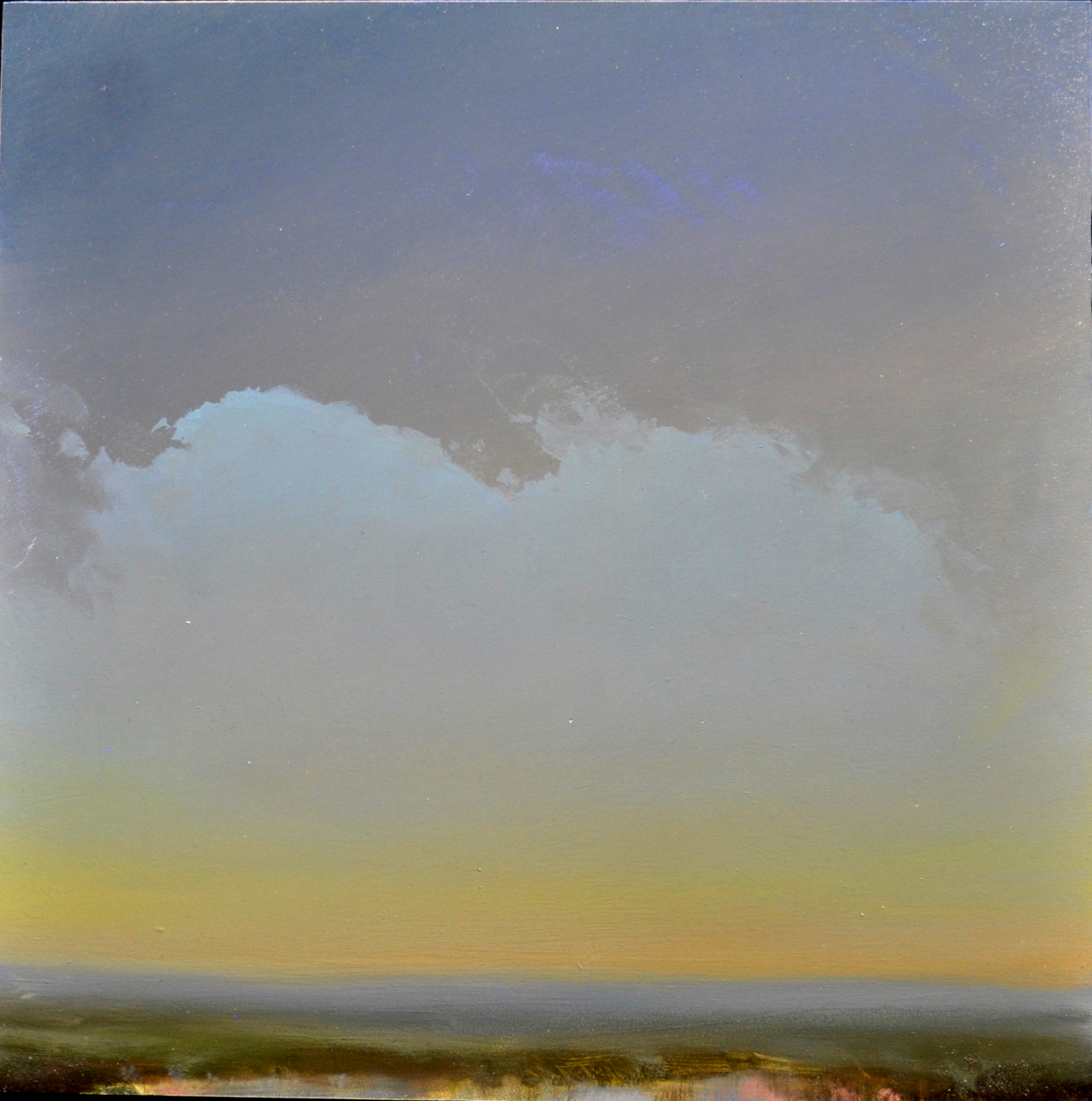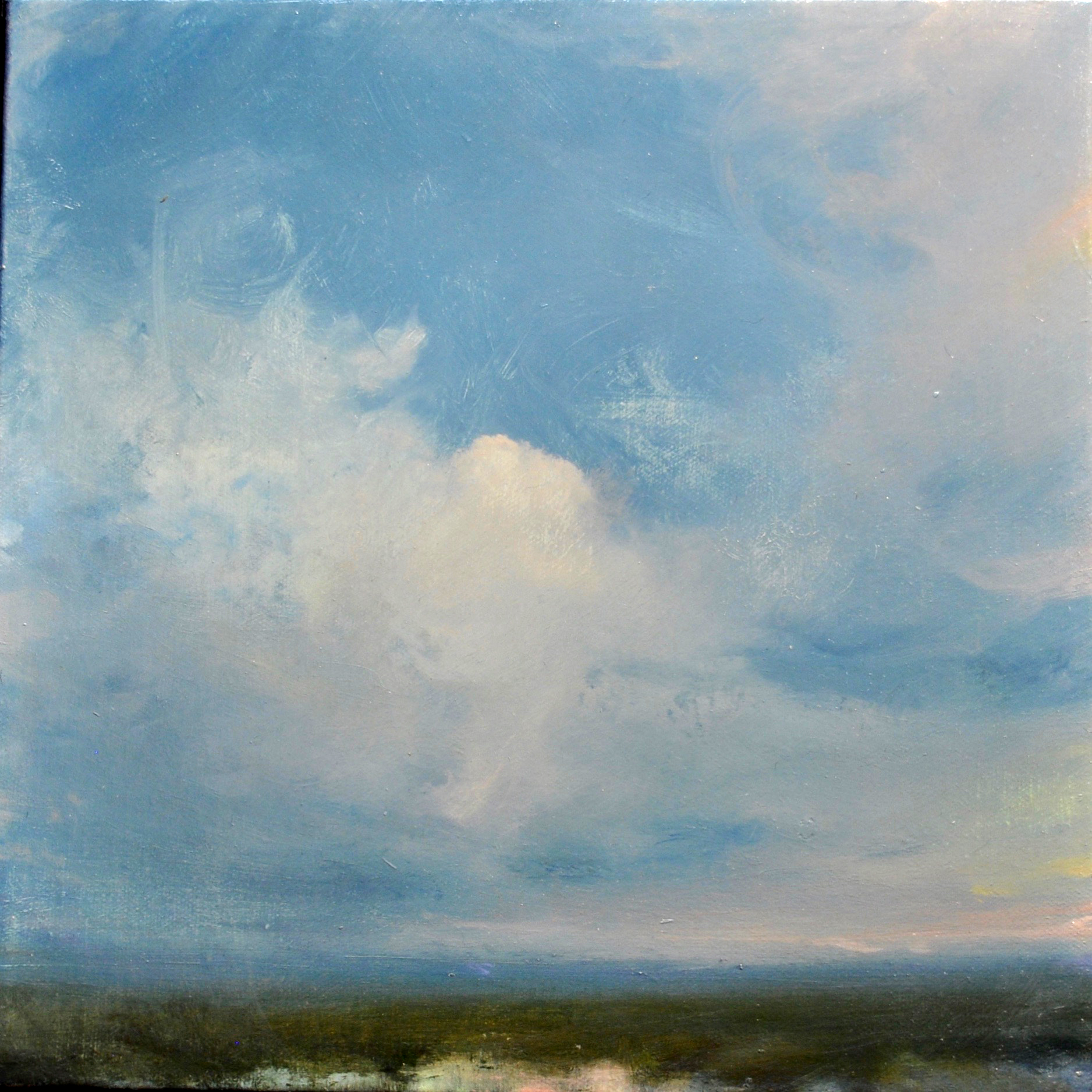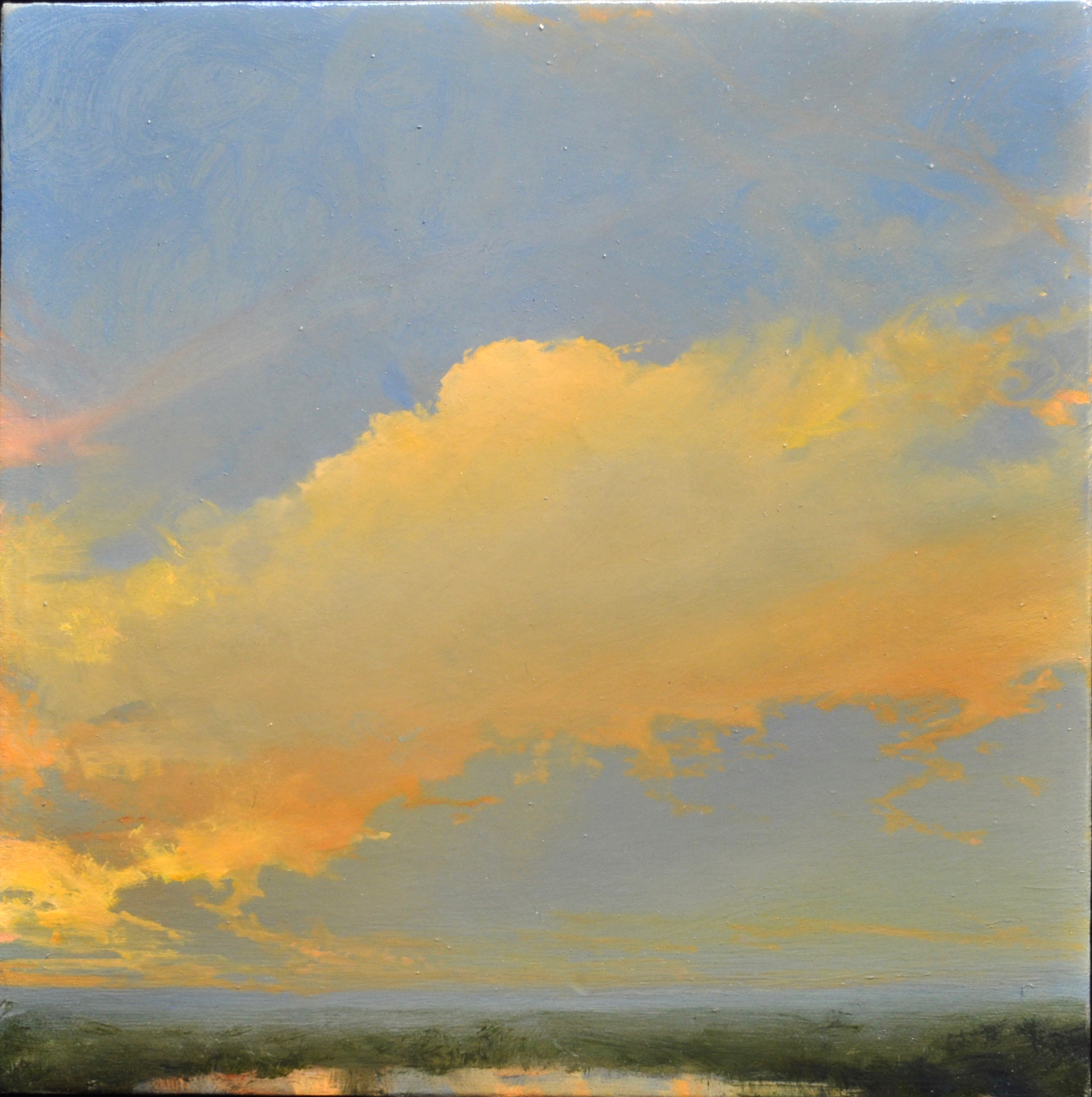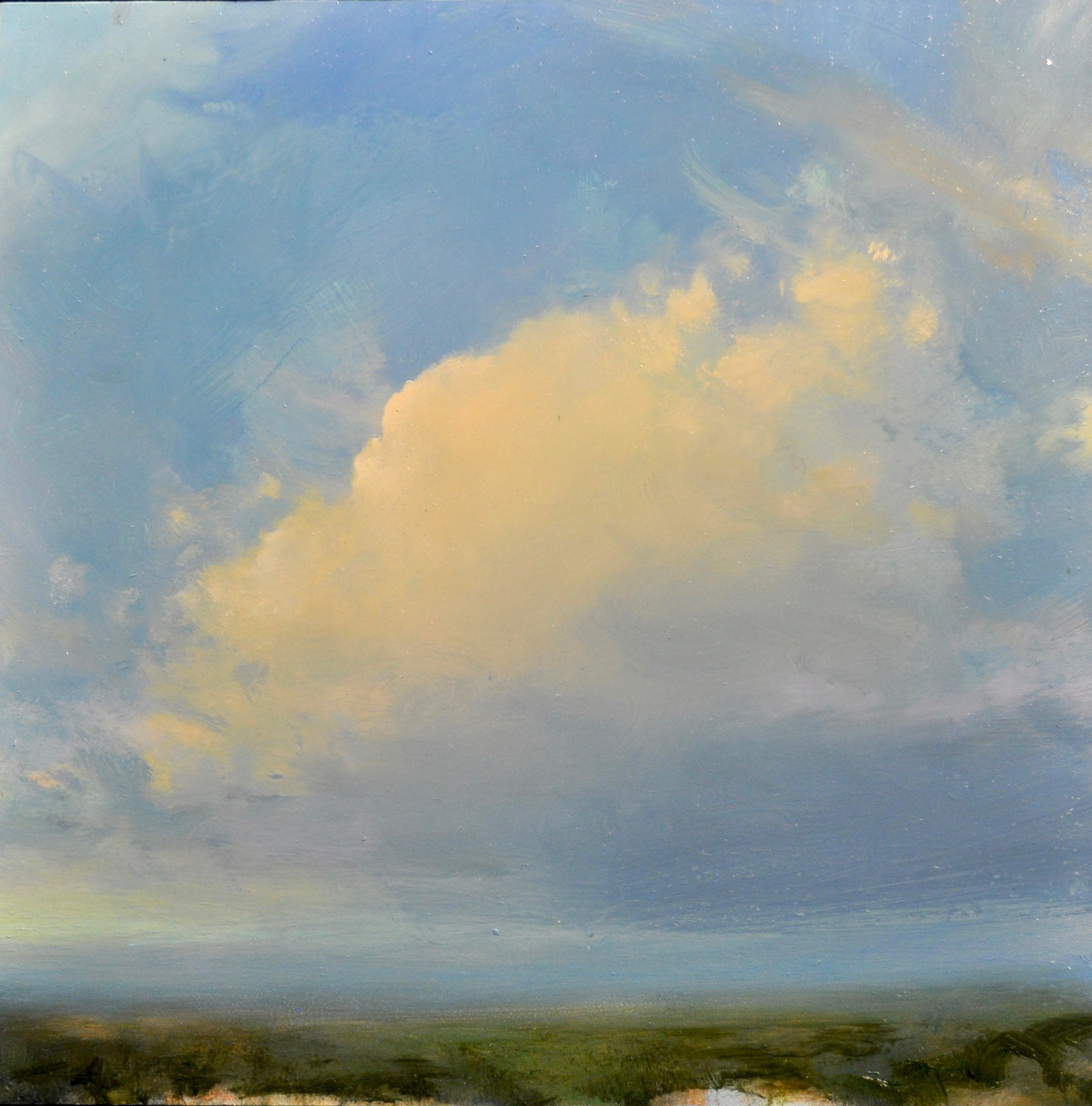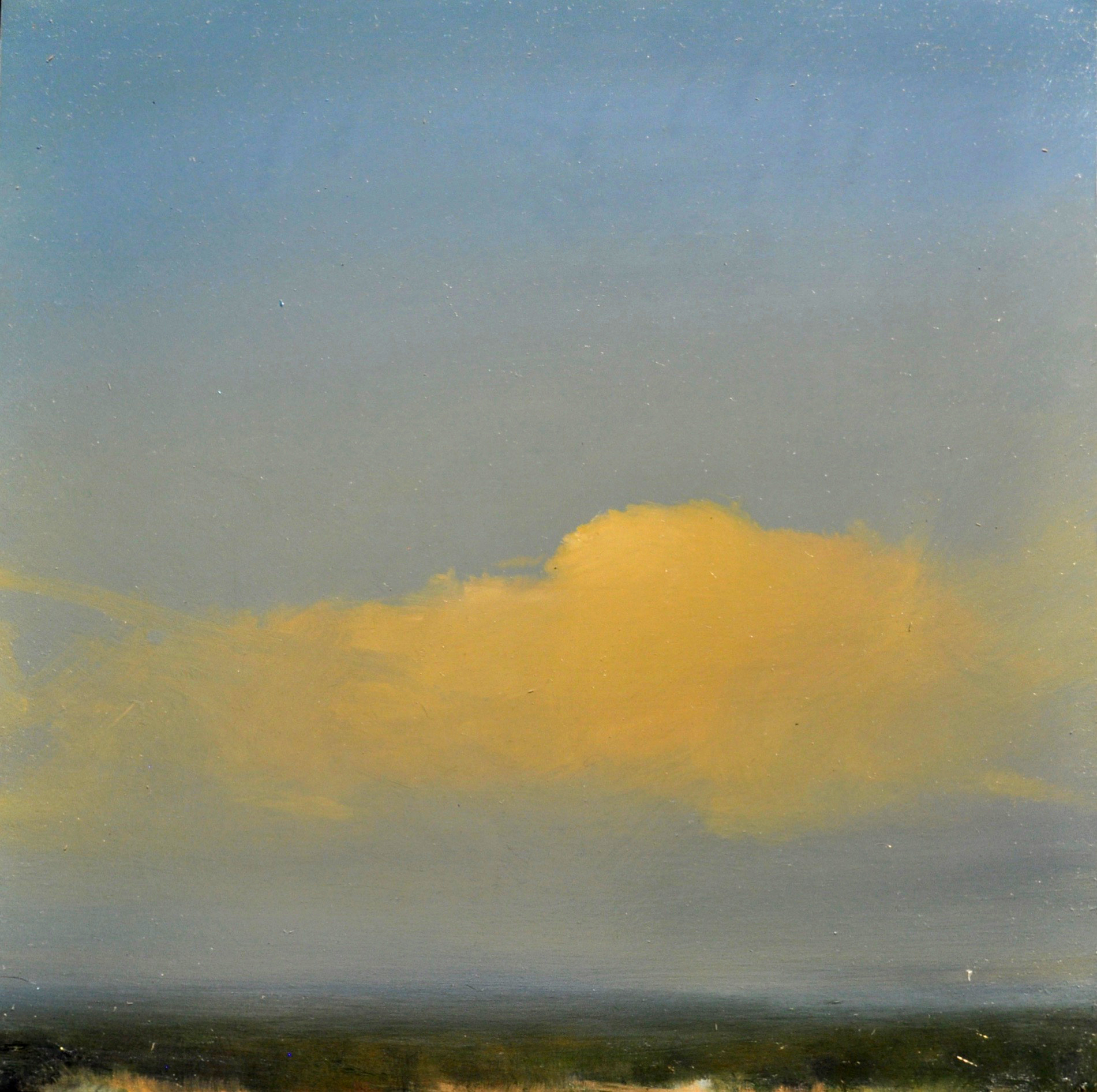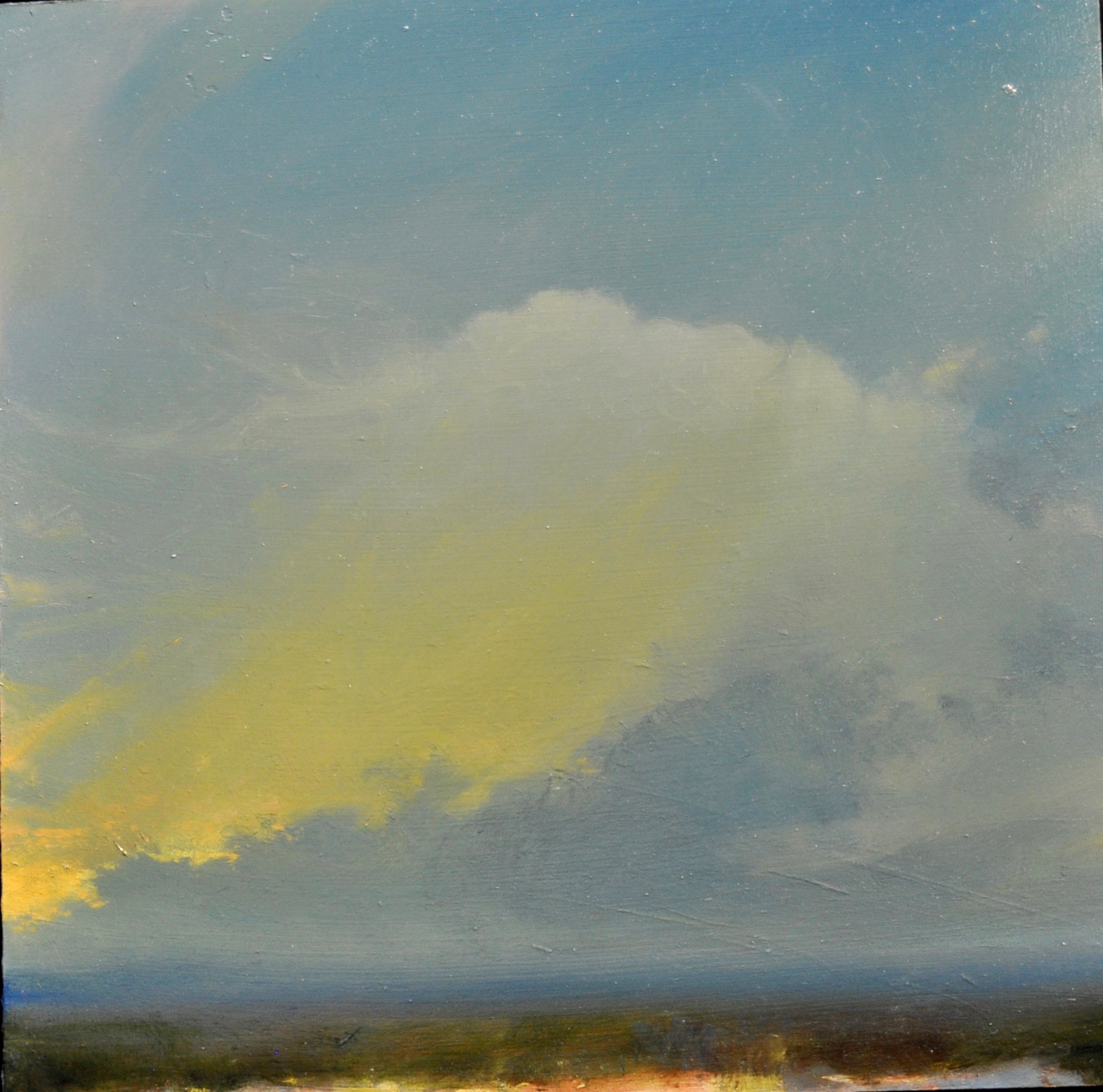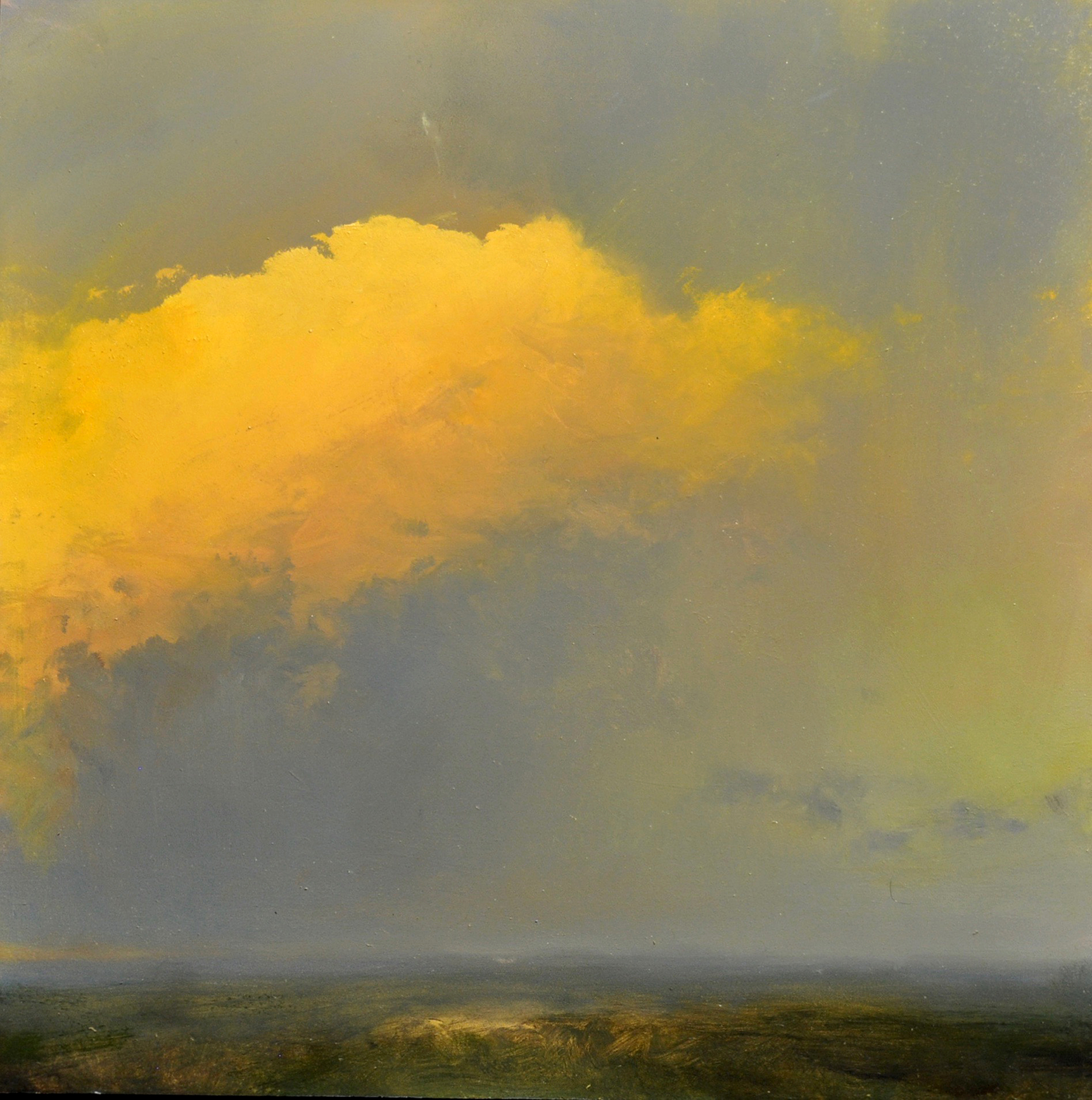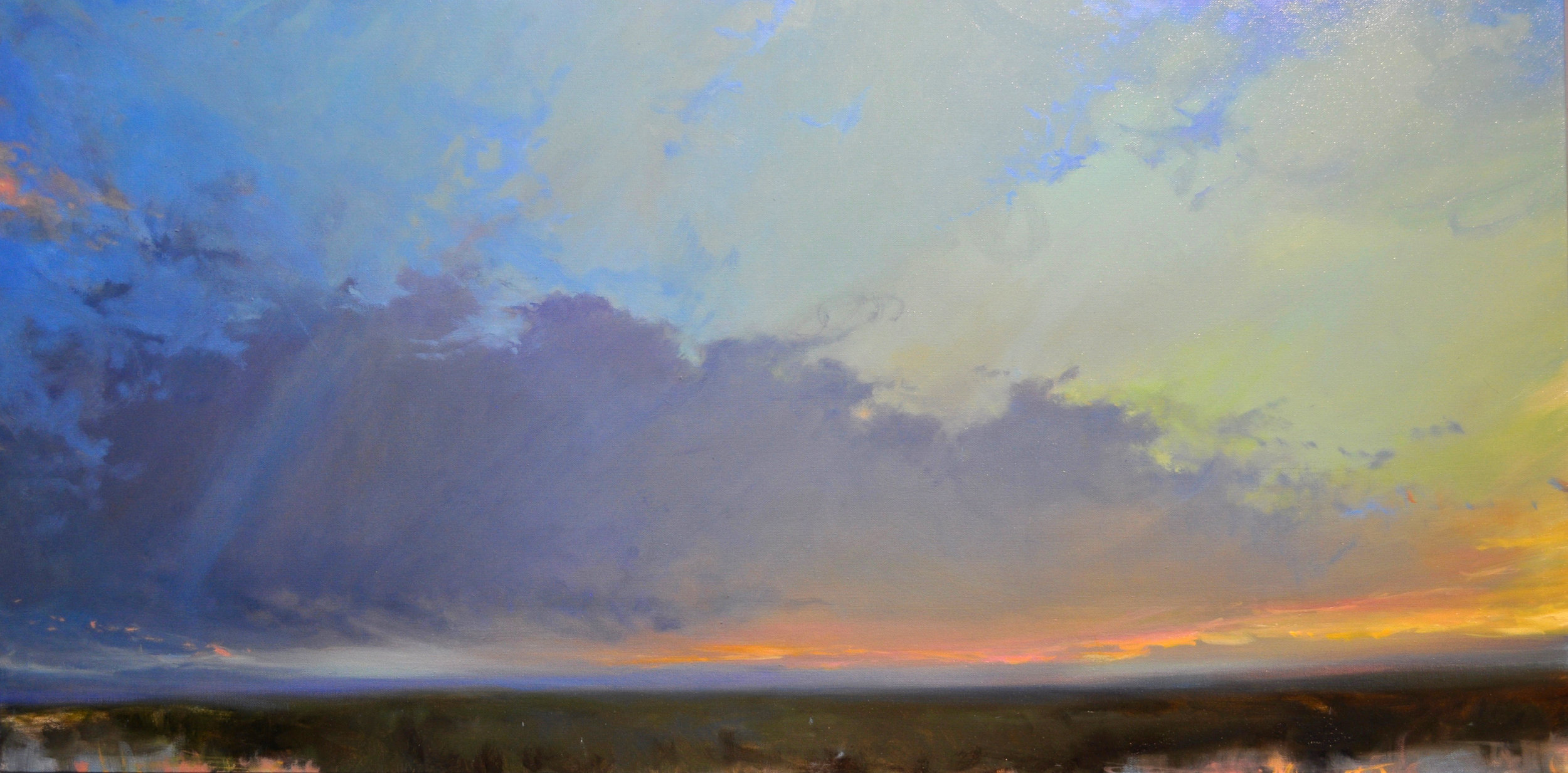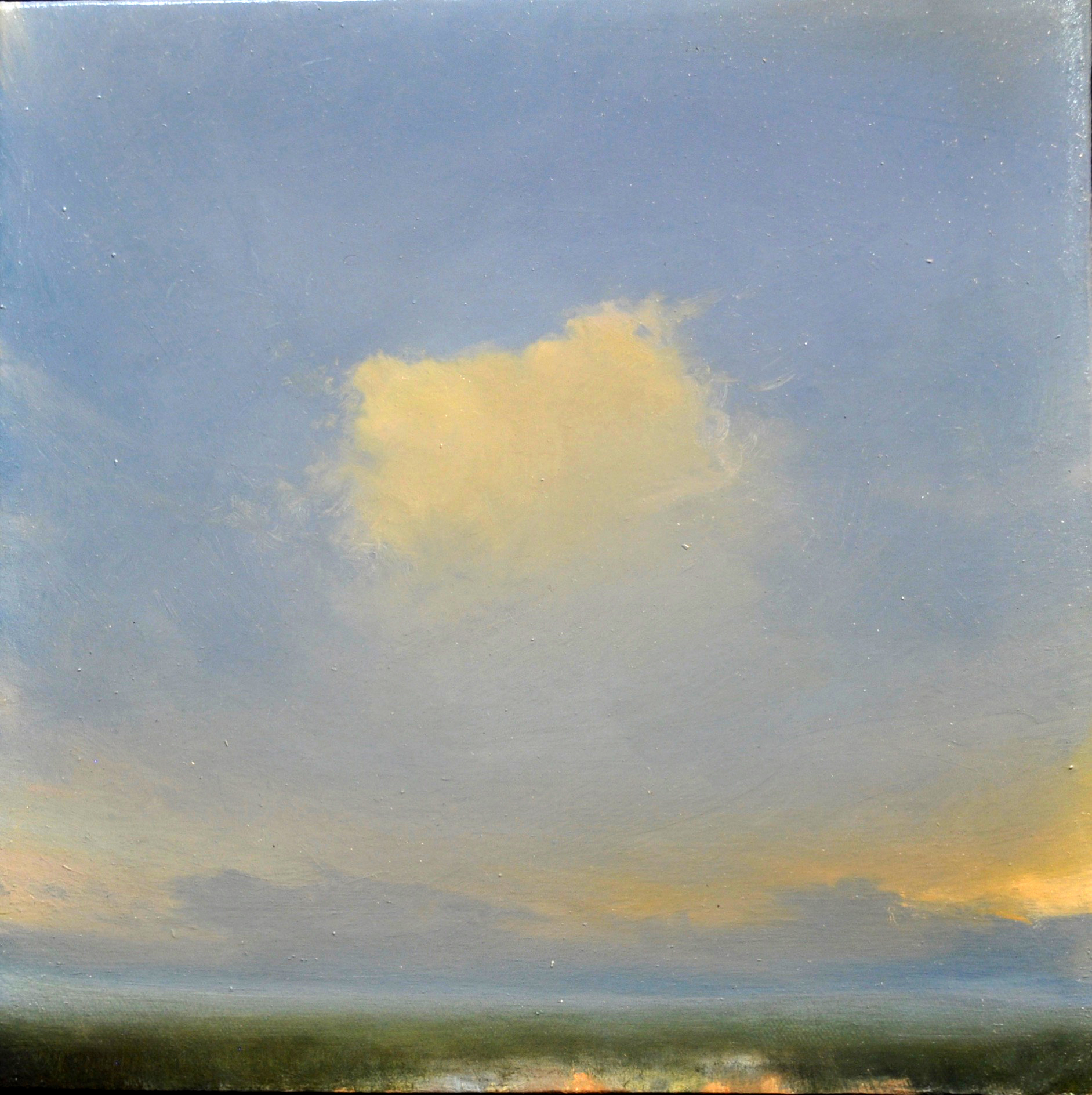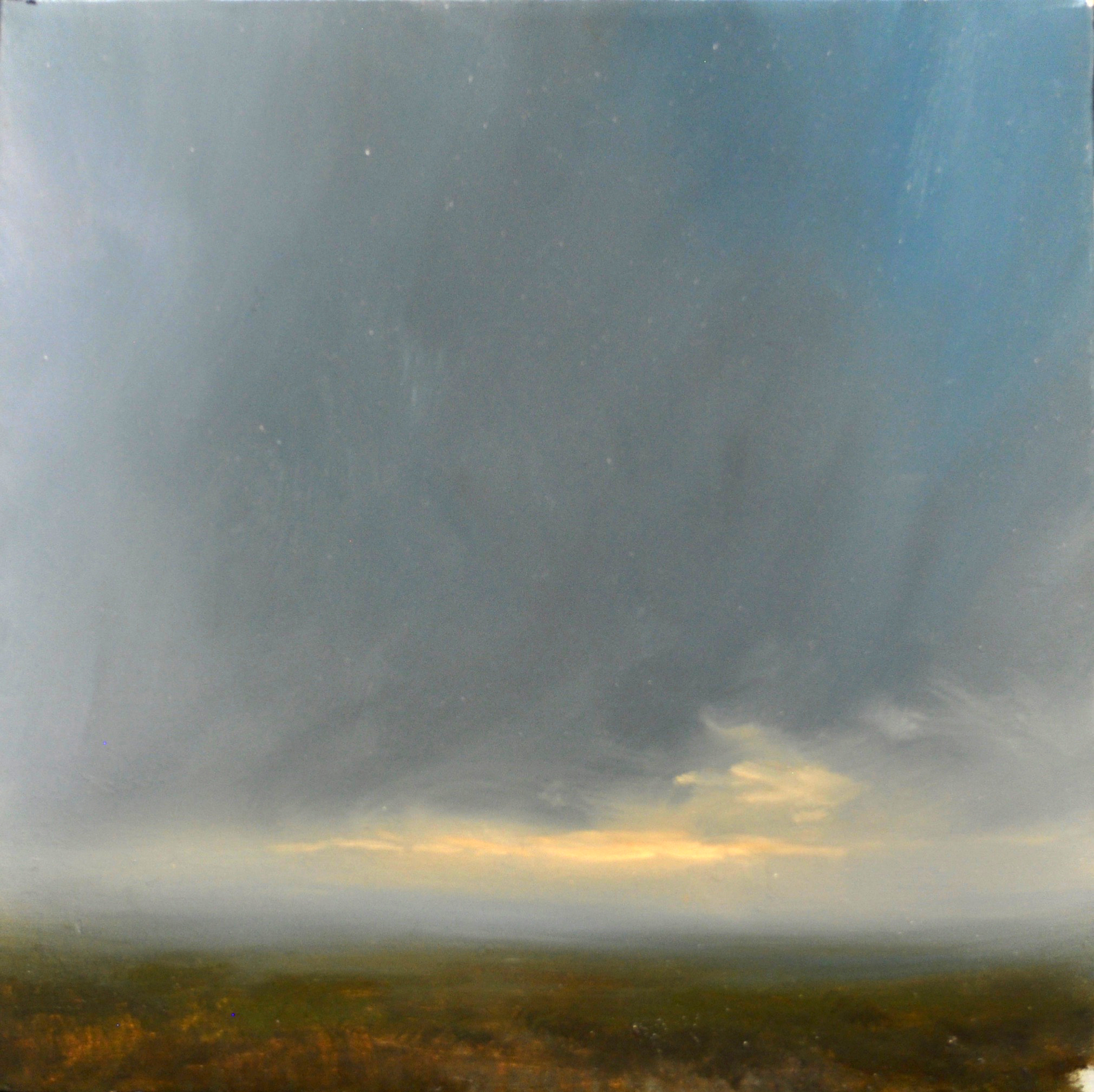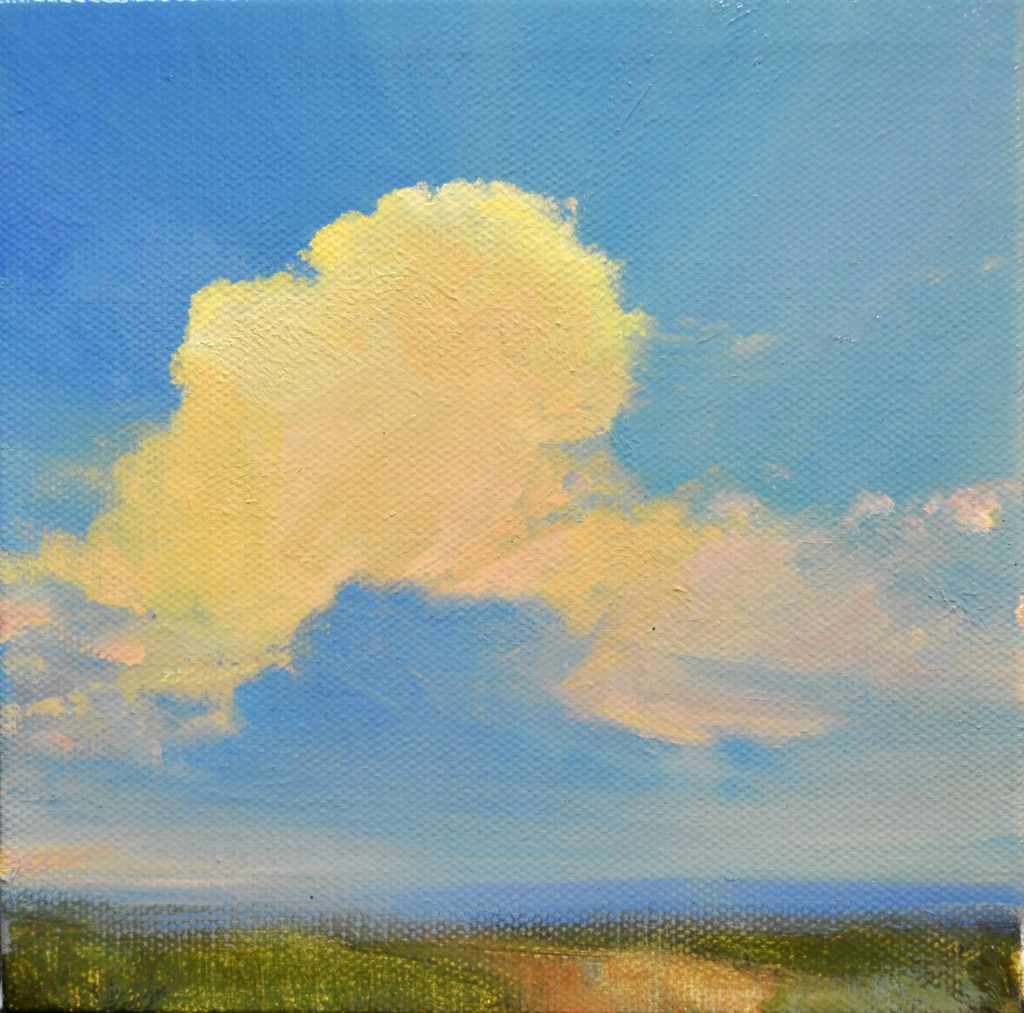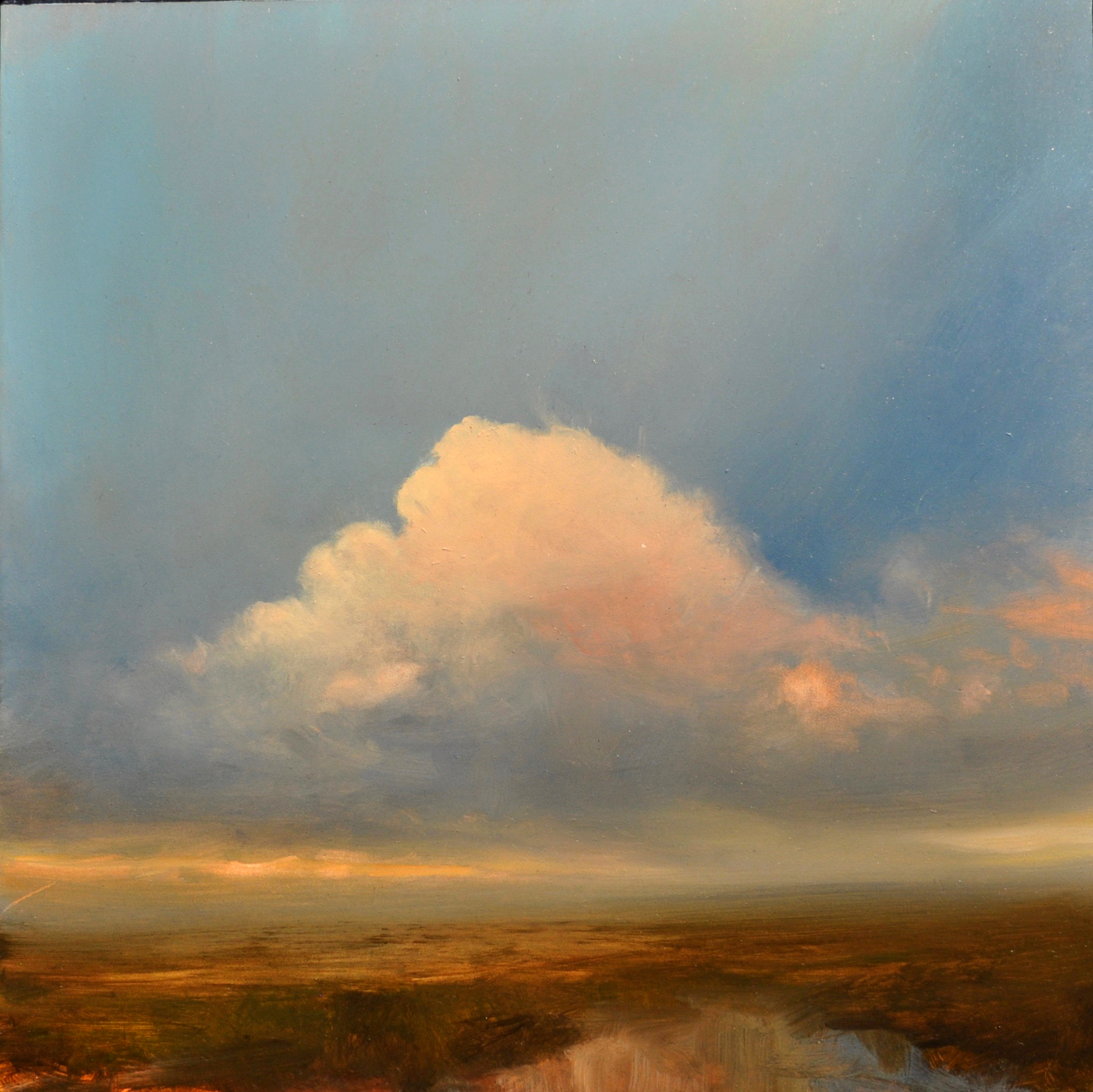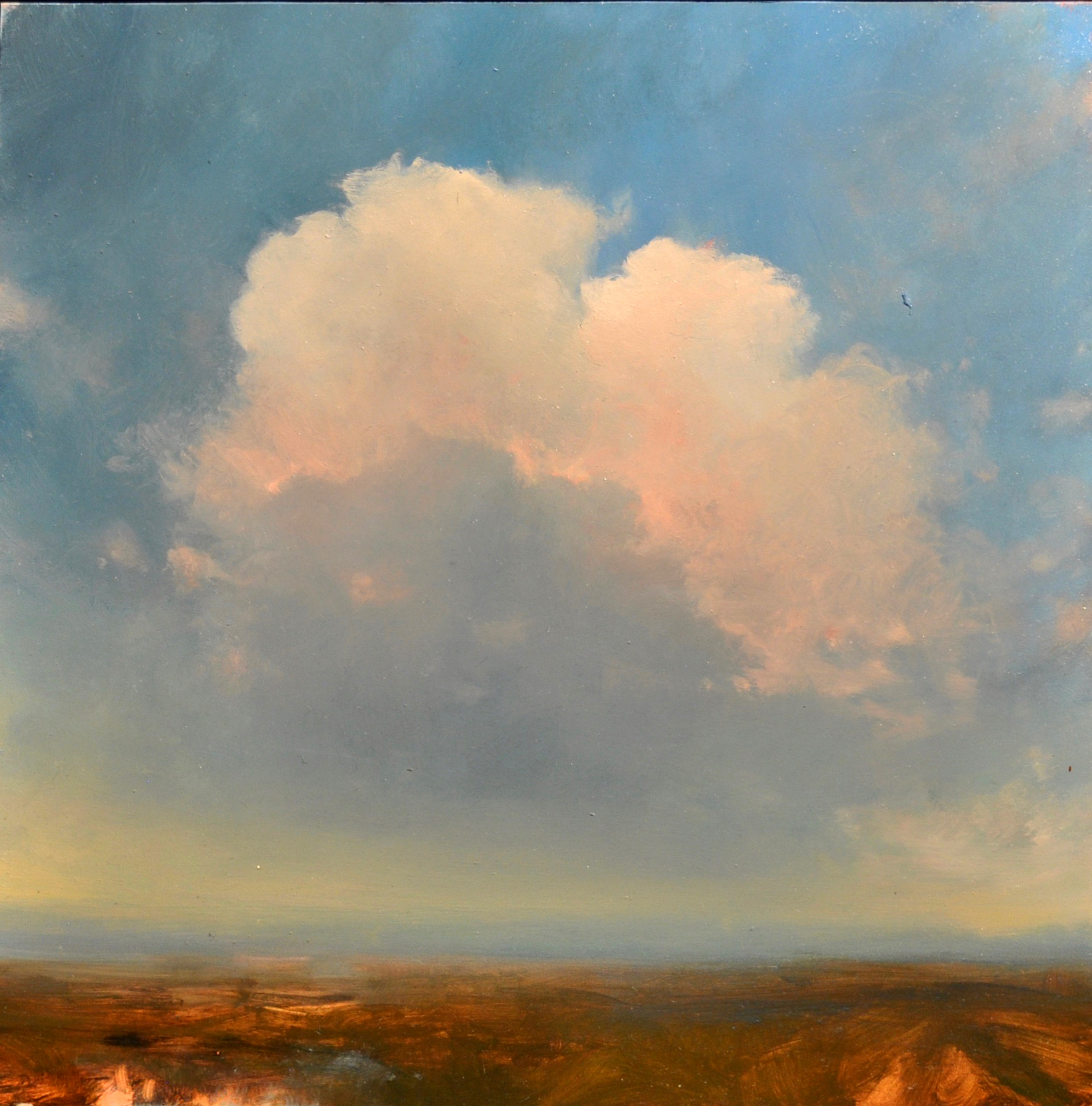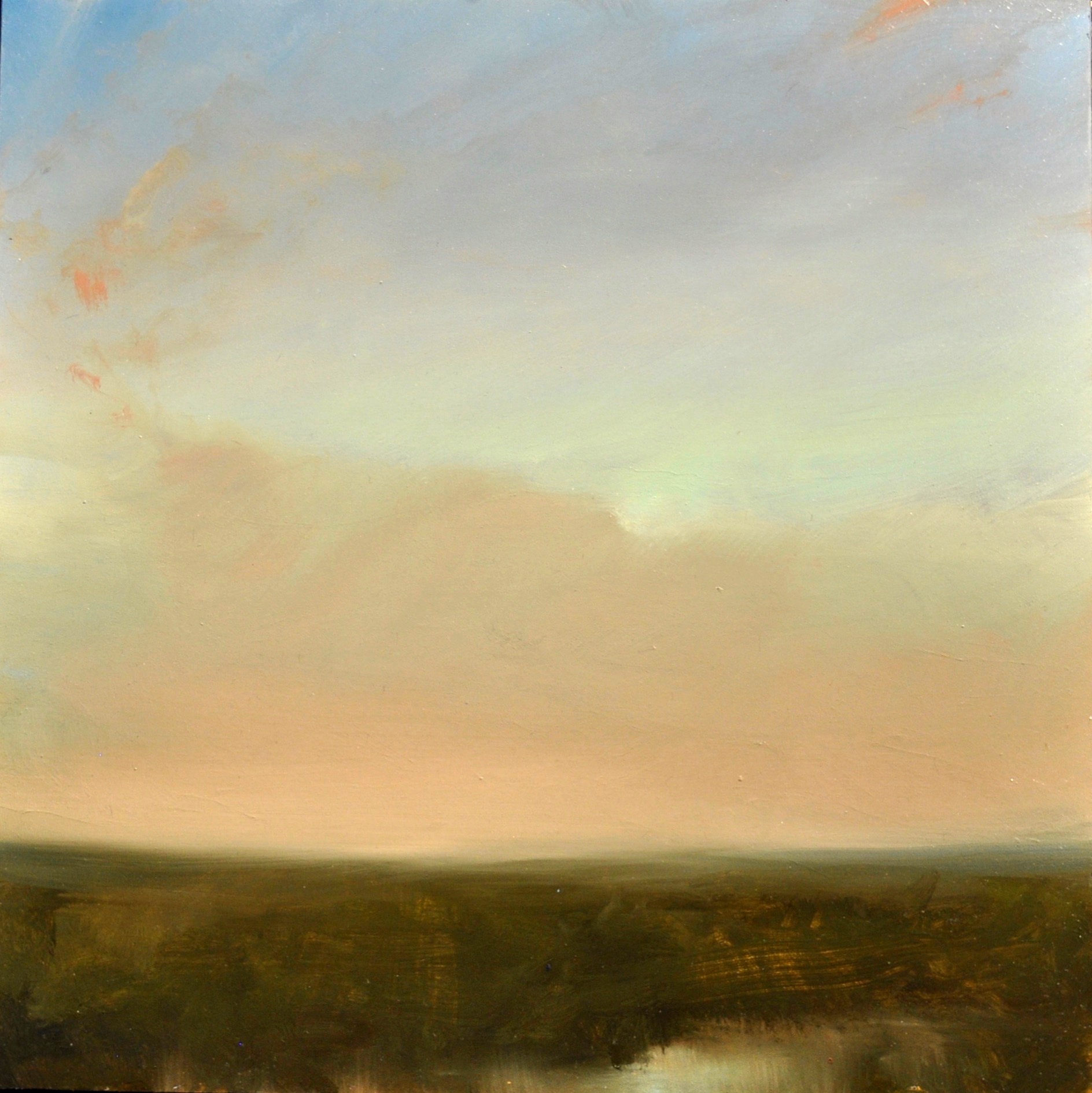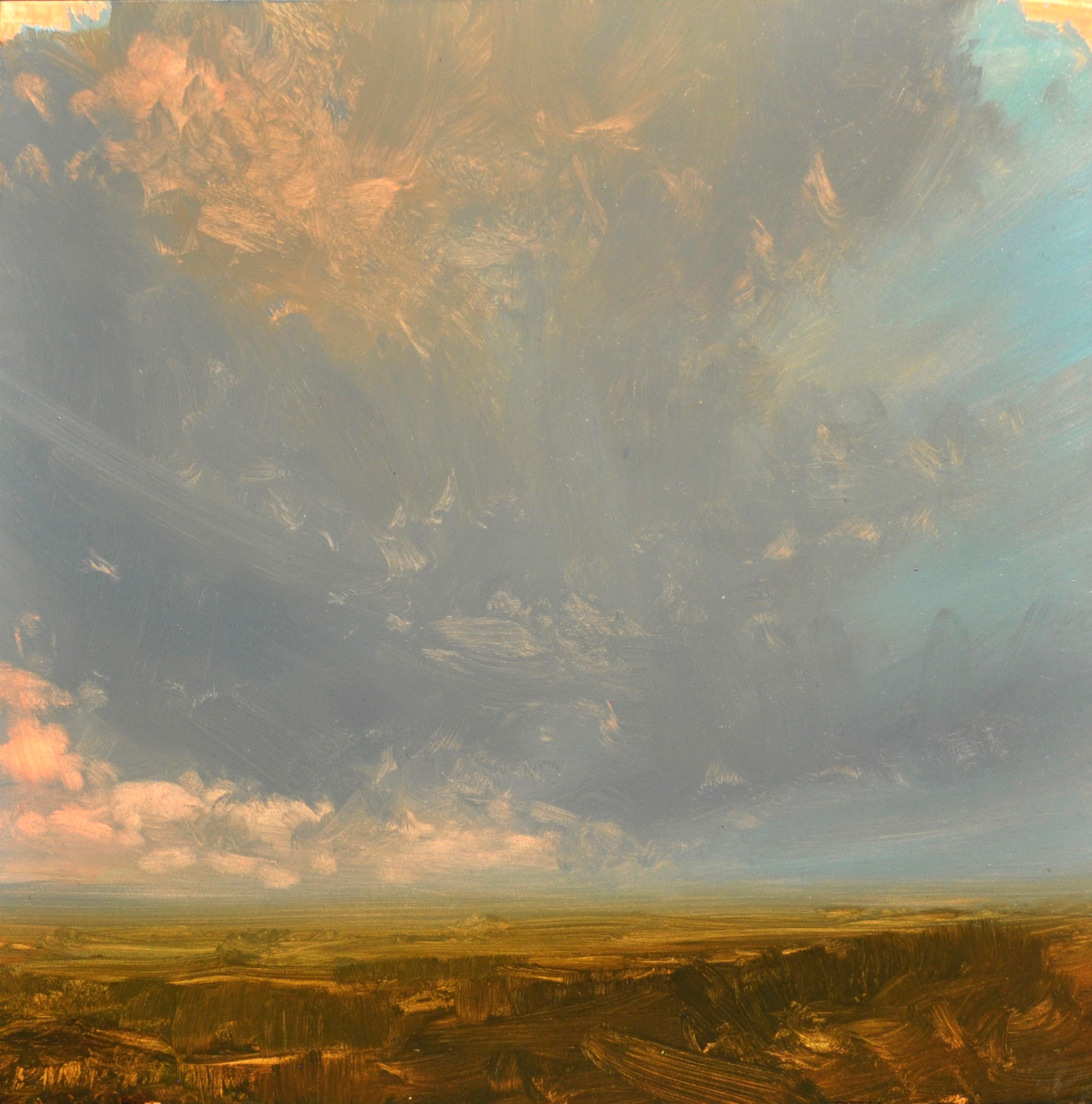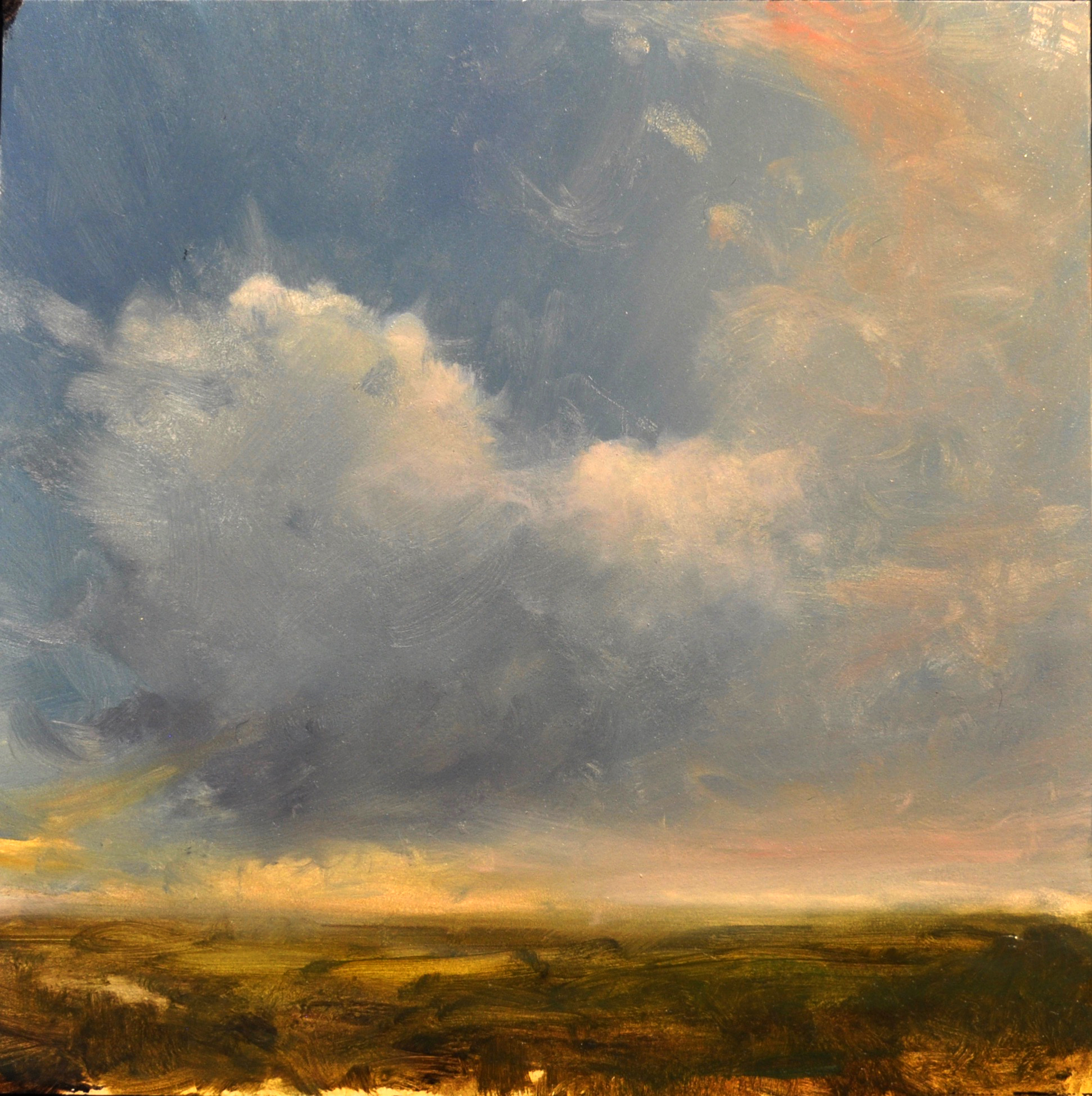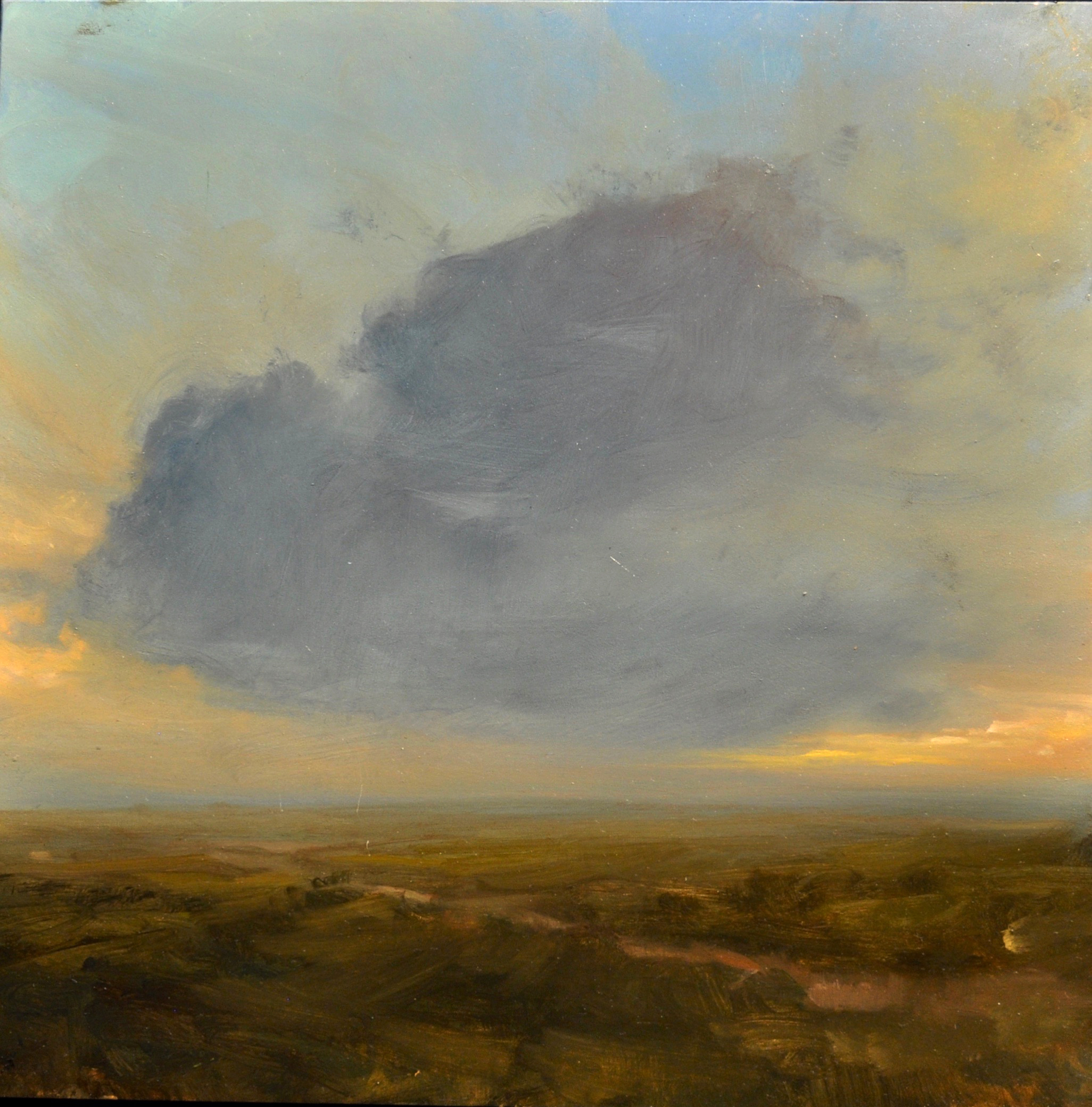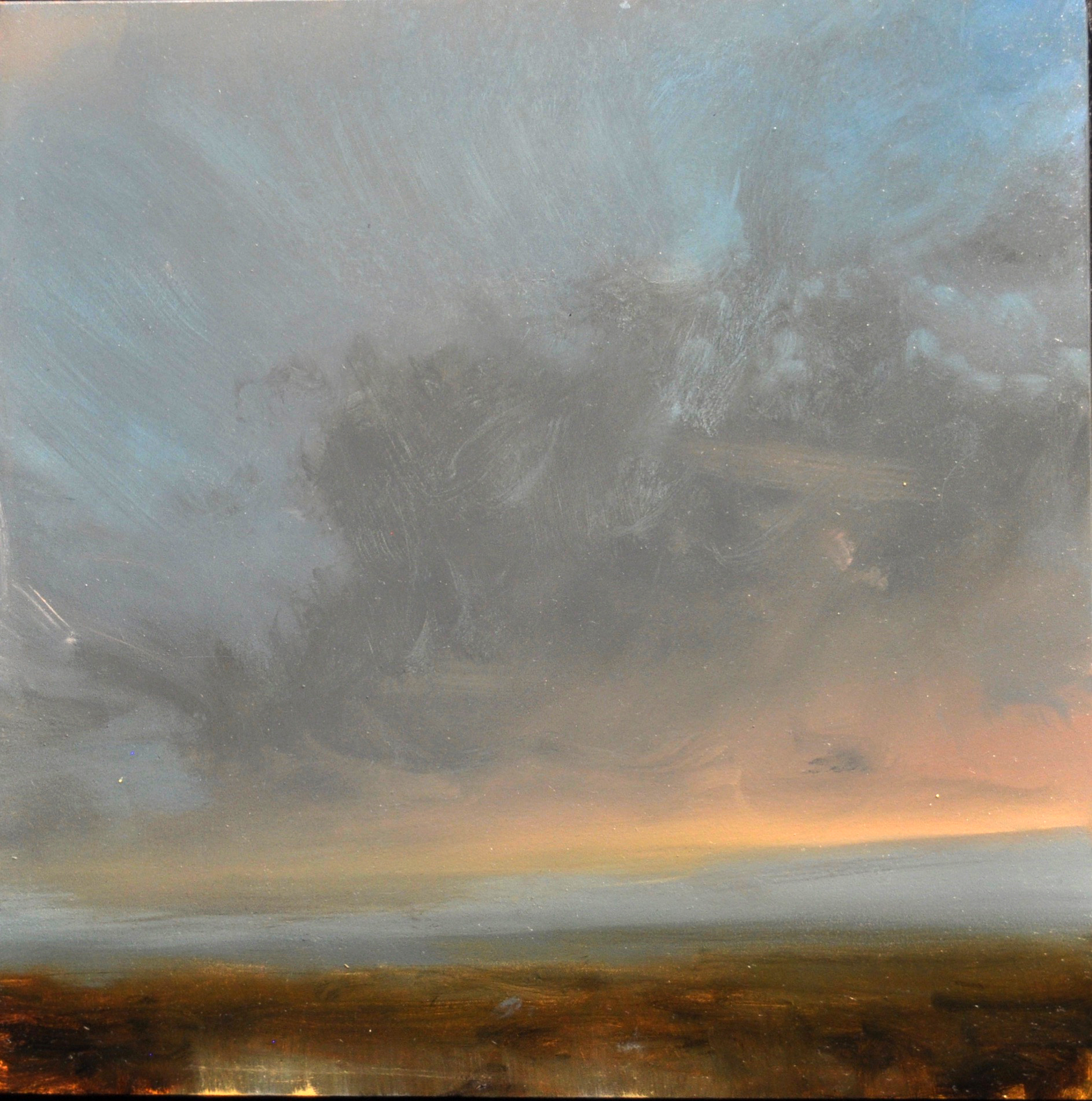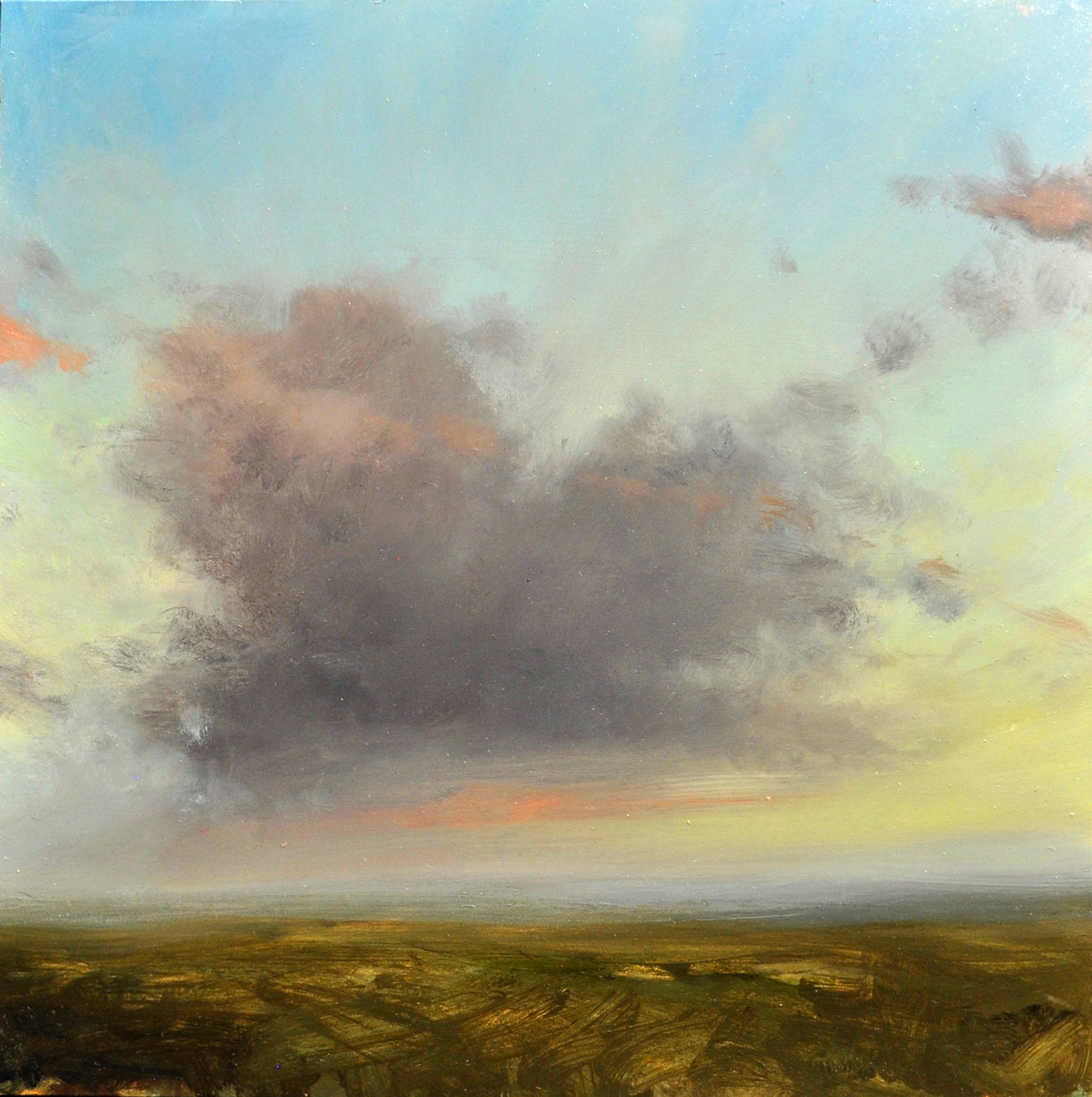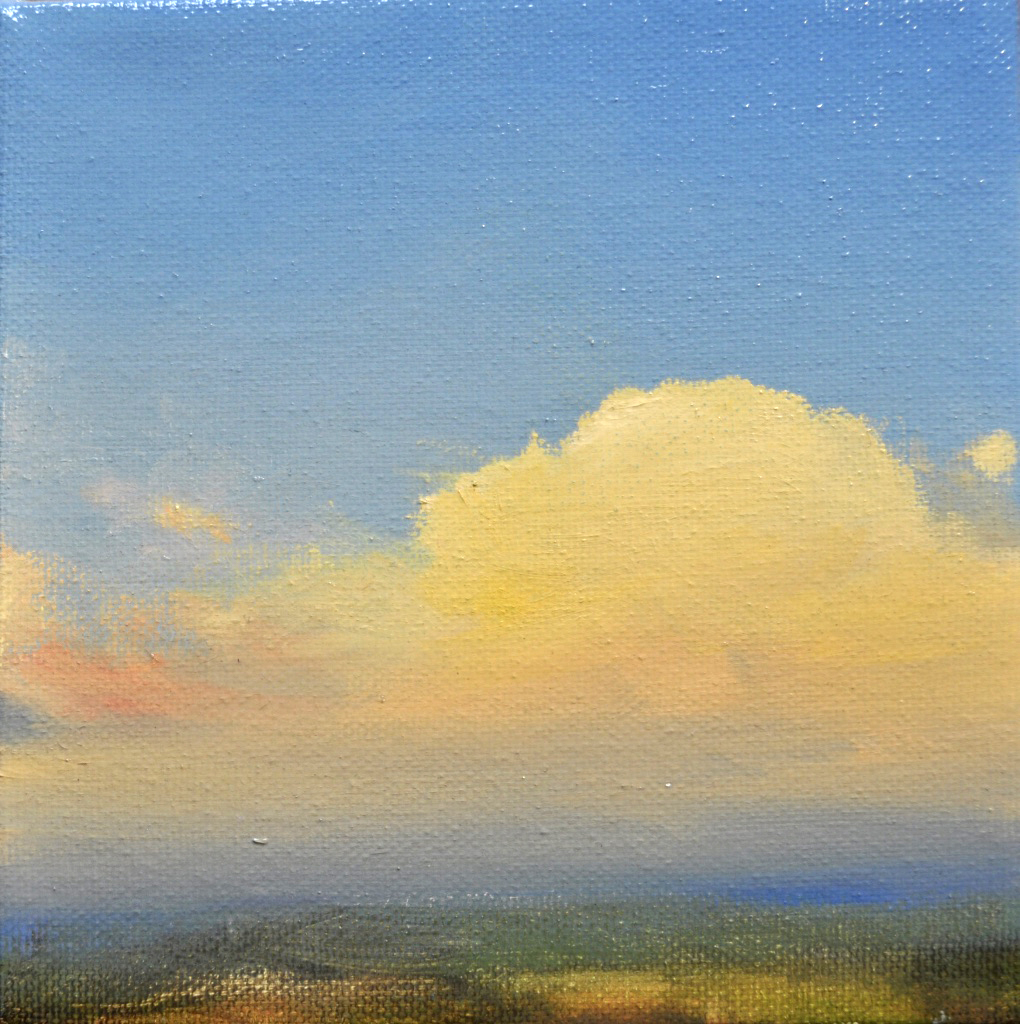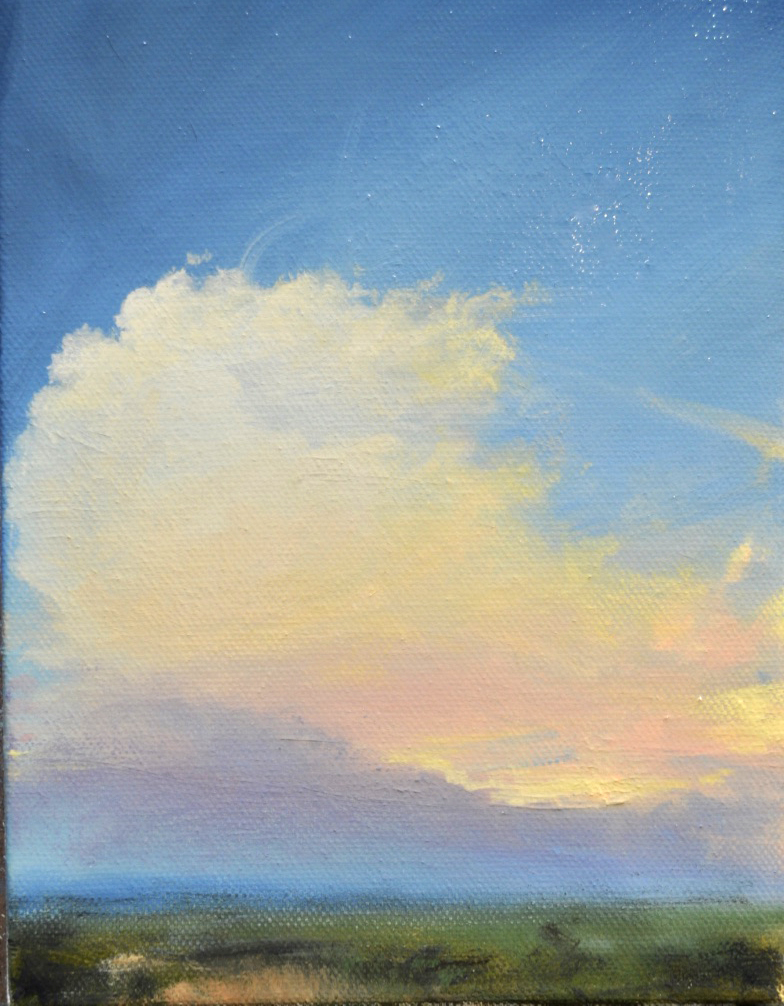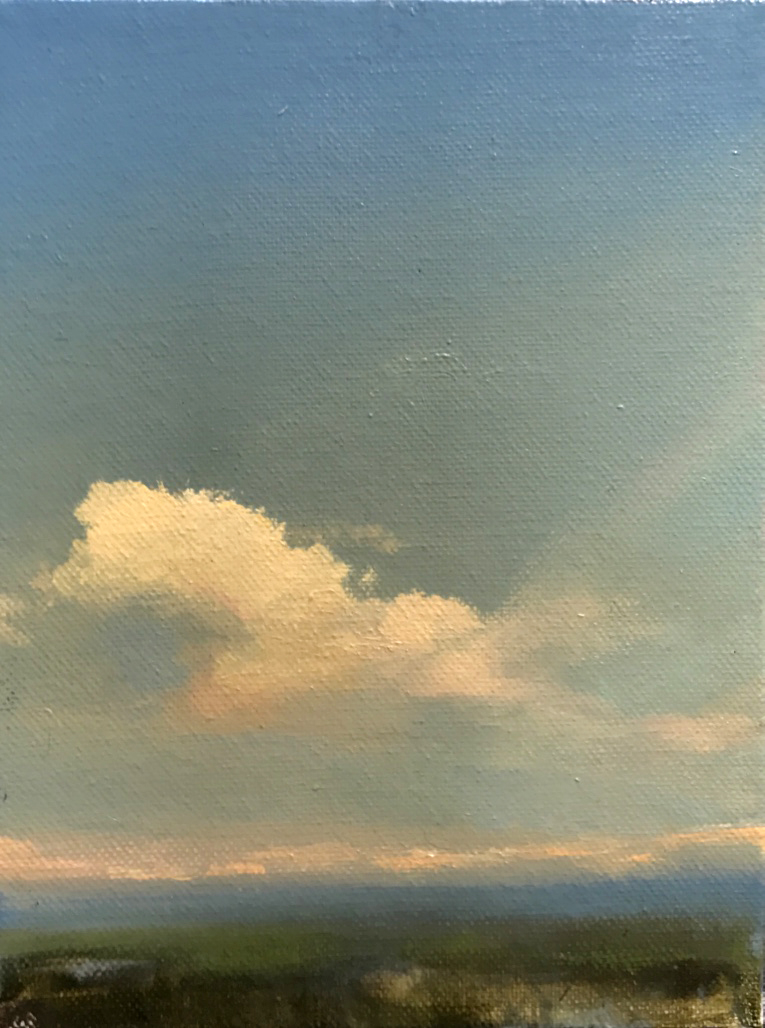MOVING LIKE MUSIC
A SOLO EXHIBITION OF NEW PAINTINGS
TO COINCIDE WITH THE FIRST PRESBYTERIAN CHURCH OF ALLENTOWN
LENTEN CONCERT SERIES
Moving Like Music
Music is my first true love. I’m as much a musician as I am a painter, however, I doubt that many people know that. I’ve always been guarded about my musicianship for several reasons; some superficial (and rather silly), like stage fright, and some more deeply seated like, somehow I’ve grown to consider music making to be a bit like a monk’s prayer or meditation; a solitary act that serves as a direct line from me to a more broadly universal energy that’s way bigger than me; a current in an eternally flowing stream of energy that I can plug myself into which will carry me away or bring me back home. So, along the way, the focus of music making turned inward and had little to do with performance and audience, and all to do with the moments spent alone with just an instrument and the silence to arrange sounds into.
In those moments, a specific quality of alchemy occurs that changes an idle instrument and willing player into channels for music to move thru. Whatever music is, in all it’s intangibility and elusiveness, it suddenly takes form and becomes the air in the room. For all its immateriality, it registers so viscerally. And with no audience and no recording, one is left in the presence of an extended present moment. Just the instrument and you, alone together—conjuring an energy made eternal by it’s very intangibility and elusiveness, a tangible prayer.
The most important influence on my painting process has always been the parallel it formed with musical composition, mainly improvisation. Of course, I have painters that I look up to and that have influenced me as painter, both technically and thematically. However, I am ultimately held to account by whether or not whatever painting I’m working on can move me the way music does. It has to live in that ether, or at least have one foot in that ethereal world and one grounded in the more material world. It has to at least be that bridge. Some of the most beautifully intense creative moments I’ve ever had come from musical improvisation and I think my painting process is a constant search to recreate those moments. Musical improvisation is a monument to what it means to be in the moment one is in, yet in full acknowledgement of the past as it exists in the note just played, and full awareness of the future as it exists in the yet-to-be played next note.
My happiest painting process is that which echoes the movement and flow of music. I establish a key and move through it in the same manner I would if I were improvising on an instrument while a rhythm section played. It’s terrifying and supremely joyful at the same time. Without that movement, the process becomes something different, something less-than the optimal creative flow. I’ve tried amending my process to a more stable step-by-step approach in an effort to feel less precarious but as I begin I’m swiftly seduced by the high wire walk of starting a painting with nothing but an empty mind, silent and somewhat fearful of the mistake but enlightened by and in love with the potential energy that a mistake holds within it. The note I played before only matters by giving context to the note I play after and so on and so on, and the same with painting and mark making.
Music is momentary and fleeting by nature and as every note leads to another note we are allowed to let our thinking selves go and just follow the flow, surrendering to that movement. As Alan Watts said, ‘To understand music, you must listen to it. But as long as you are thinking, “I am listening to music”, you are not listening’. The same is true of painting. It requires a similar surrender. When I think about painting, the painting I’m making suffers. Instead, I have to be like music, with it’s constant forward motion, kinetic and unattached to anything but that very movement. To paraphrase Alan Watts again, ‘…the purpose of listening to music is not to reach the end of the piece. The joy is found in listening to the music in each moment’.
This collection of paintings is part of a long running series I’ve visited and re-visited since about 2007. It’s part moving meditation and part love letter to music and the creative process. There are quick one session studies, that can be likened to small improvisations or variations on a theme, as well as some fully developed, more orchestrated and polished arrangements of those themes.
Thank you to Ann Lalik for the opportunity to show in the newly developed gallery space at First Presbyterian Church of Allentown. I’m honored to be the inaugural exhibit and thrilled that it coincides with the Gloria S. Snyder Lenten Concert Series.
All paintings in the show are available for purchase in my store
and here is my soundcloud
i'll be adding more music as I make it
Here’s a playlist of music that was integral in shaping my painting process
This is obviously an abbreviated list. I left out so many important pieces of music and artists for the sake of brevity. But this is good example of what has informed and shaped my creative process so far. Perhaps I'll keep adding to it...
Johann Sebastian Bach, Sonatas and Partitas for Solo Violin, Julia Fischer
I’ve listened to dozens of artists perform these but none seem to resonate with me as much as Julia Fischer’s. These sonatas and partitas feel like small, intensely focused studies, like plein air paintings or figure drawings. It takes a great deal of practice to make those feel fresh and uncomplicated and these musical studies are an excellent reminder of that spirit.
Chopin Nocturnes, Yundi
Again, I’ve heard so many performances of the nocturnes but this performance feels more soulful and spacious to me. I feel I can hear the emptiness of the room the piano is in and it's beautifully haunting. I like to think of my fairly limited painting compositions mirroring the composition in these nocturnes; a beautiful, voice-like melody in the right hand and broken chords in the left, land and sky, respectfully.
John Coltrane, My Favorite Things
I listen to this piece of music on repeat. My record for listening to it on repeat is 12 hours. I put it on and leave it until it transforms the room into a consciousness. There are so many Coltrane examples of masterful improvisation but this one has my heart. Probably because I discovered it early in life and it helped form my relationship between music and painting.
Frank Zappa, Watermelon in Easter Hay
This stands as my favorite of Frank’s music because it’s one of the very rare appearances of beauty. Not that his music is ugly, but more that beauty isn’t really a prime motivation of his compositions. It’s more mind-centered than emotive and I love it for that, probably because my work is more devoted to beauty. When I first heard this song, I remember hoping midway thru that it would stay the course and not go off in a wholly different direction as much of his music is apt to do. It was the first I'd heard an emotive type beauty in any of his work. I was spellbound by it. Not to mention the little monologue in the beginning of the song became somewhat of a cautionary tale/ words to live one's creative life by. I do the same listen-on-repeat with this song as with the Coltrane. I also included the entire 'Shut Up and Play Your Guitar' album in the playlist because it's a master class in mind expansion by way of improvisation. I listen to it when I find myself getting too Yin, so to speak. It's a lifeline out of the emotive swamp.
(Fun Fact: In college, the day after Frank Zappa died, I put this song on repeat and pointed the speakers out the window for the entire day as a 'tribute'. I was gone about 8 hours while this song floated around campus thru the air again and again. I got written up for it. #whatever. I also wrote two term papers on Zappa's music, one based on this song and it’s intro monologue, and the other on his orchestral work.)
Nusrat Fateh Ali Khan, Jewleh Lal
Qawwali music is an ecstasy like no other. Nusrat was otherworldly in his genius. The best description of what Qawwali music is comes from the liner notes Jeff Buckley wrote for Nusrat's Supreme Collection:
In between the world of the flesh and the world of the spirit is the void. The Qawwali is the messenger who leaps empty-handed into the abyss and returns carrying messages of love from the Beloved. These messages have no words, per se, but at the high point of a Qawwali performance, they come in bursts of light into the hearts and minds of the members of the audience. This is called Marifat, the inner knowledge, and it is in the aim of the Qawwali tradition to bring the listener into this state: first through the beauty of the poetry and the weight of its meaning; then, eventually, through the Qawwali's use of repetition; repeating the key phrases of the poem until the meaning has melted away to reveal the true form to the listener.
Just the idea of sitting in between the world of flesh and world of spirit waiting to go get messages from God and bring them back for everyone is intoxicating for me. I like to consider that perhaps my invented/remembered landscapes are the waiting place for those messengers, or any viewer.
Jeff Buckley, Grace
If I could be one song, it would be this one. It's my best friend and soul mate and I hope I find it in every life time. It's what I want to be in life and after it and what I want my art to feel like. It shaped me more than any other music, particularly the live version from Sydney. If I could make anything that evokes and holds what this song does, then I'll have done something.

